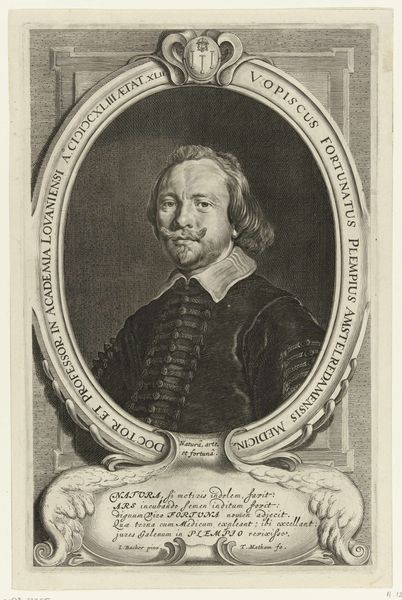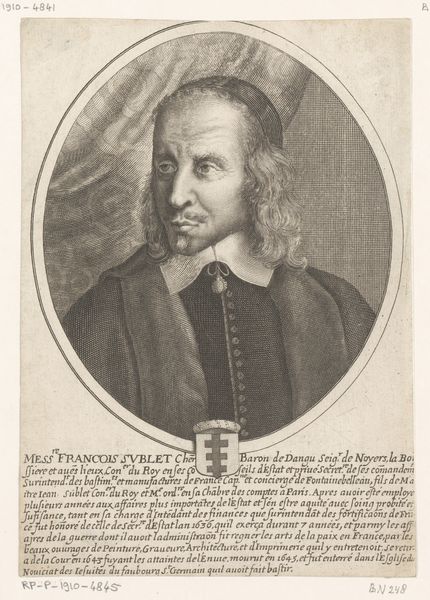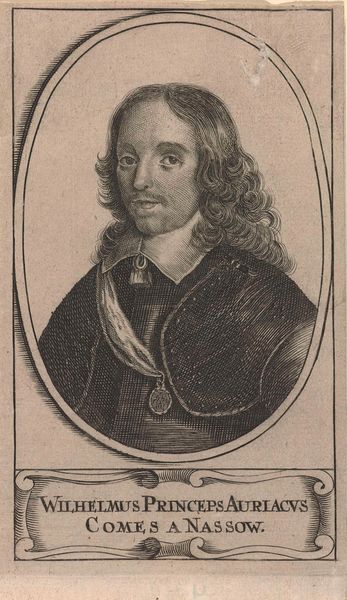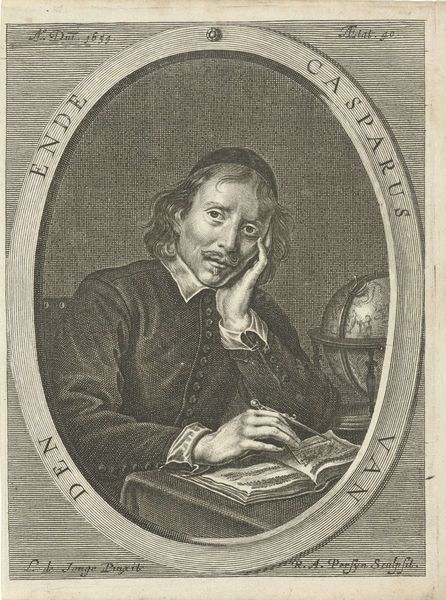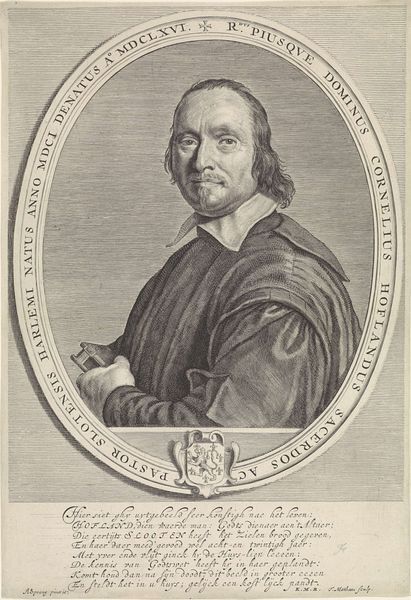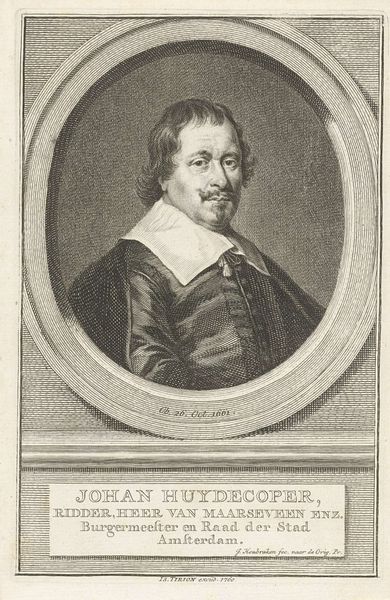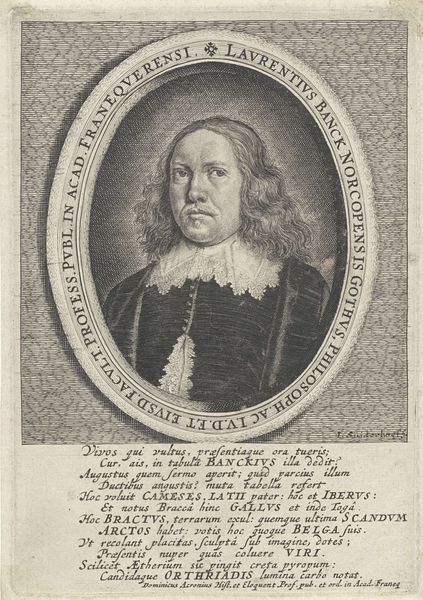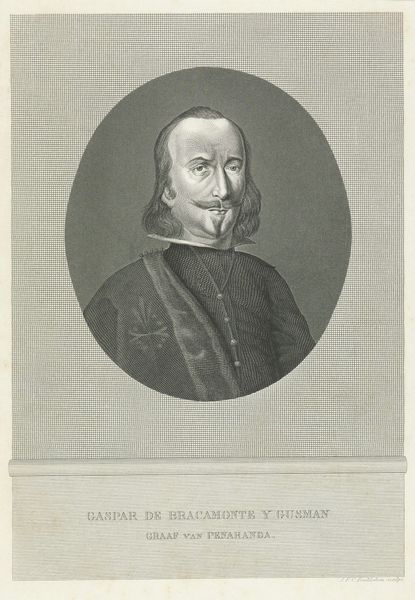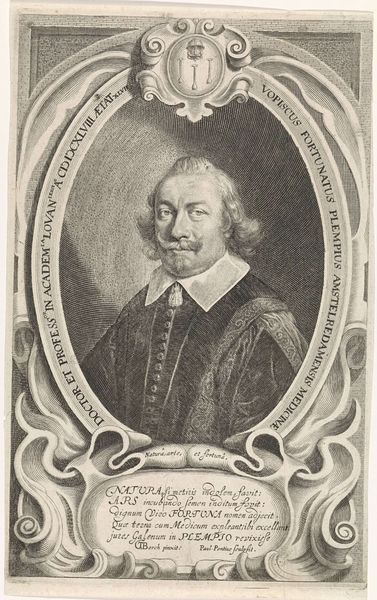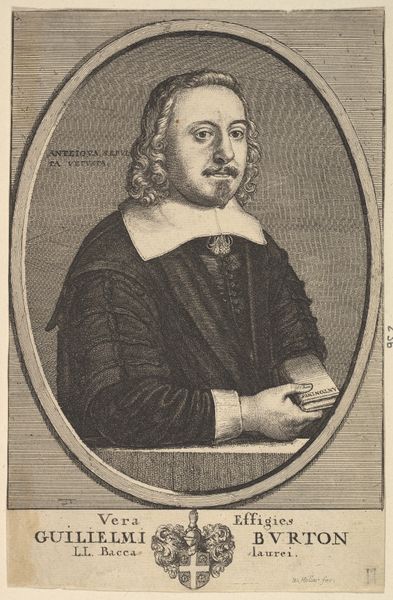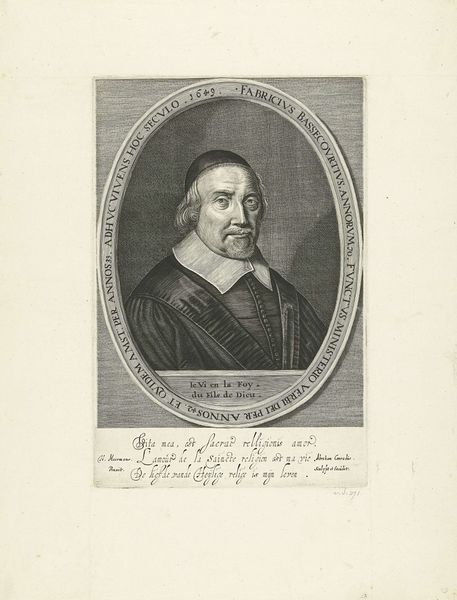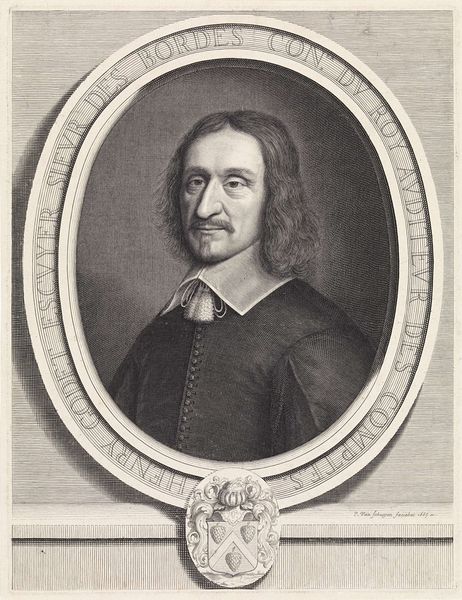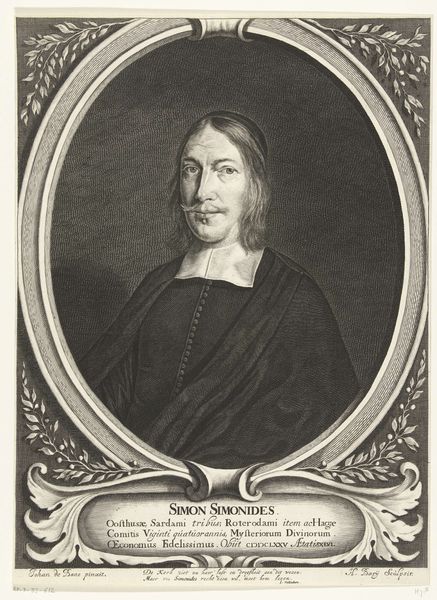
engraving
#
portrait
#
baroque
#
engraving
Dimensions: height 183 mm, width 138 mm
Copyright: Rijks Museum: Open Domain
This portrait of the philosopher Jakob Böhme was made by Jan Caspar Philips, sometime in the 18th century. It's an etching, a printmaking technique that relies on the corrosive action of acid to create lines in a metal plate, which are then inked and transferred to paper. Consider how the etcher’s skill has transformed a base material—the metal plate—into an image of great detail. Look closely and you can see the many tiny lines that build up the tones of Böhme’s face and clothing. Etching was a crucial process for disseminating images, allowing for relatively quick and inexpensive reproduction. So, while this portrait presents Böhme as an individual, even an intellectual, it is also a product of a particular moment in the history of labor and production. The print embodies a tension between the skilled hand of the artist, and the social context of the print shop. Appreciating that context helps us understand the full meaning of this artwork, challenging traditional distinctions between fine art and craft.
Comments
No comments
Be the first to comment and join the conversation on the ultimate creative platform.
